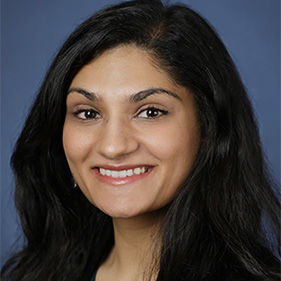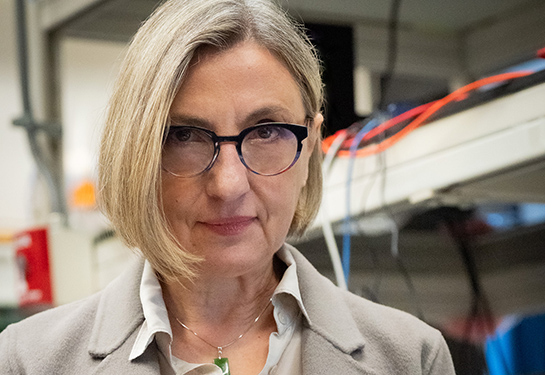Opioid epidemic: How are we teaching future doctors to treat pain?
UC Davis School of Medicine takes comprehensive approach to relieve pain with and without opioids
Pain is the most common reason that people go to the doctor. Yet, amid the growing need for the treatment of pain, physicians and medical students in the United States have limited training in pain management and prescribing opioids.
The UC Davis School of Medicine, however, has taken a different approach – it has re-examined how pain management is taught, and adopted a new pain curriculum throughout medical education.
UC Davis medical students undergo more than 100 hours of required and dedicated total pain medicine educational content during their four years of training. The School of Medicine is now among the leading medical schools in the world for pain management education.
Need for increased training in pain management
A recent report from the Centers for Disease Control and Prevention (CDC) estimated 51.6 million United States adults (20.9%) experienced chronic pain, and 17.1 million (6.9%) had high-impact chronic pain that results in substantial restriction to daily activities and unnecessary suffering.
Despite the number of patients experiencing chronic pain, many doctors have not been adequately trained in pain management because medical schools traditionally don’t dedicate much time to teaching future physicians about it.
A 2018 study of pain medicine curriculum in 383 medical schools internationally and found 96% of schools in the United Kingdom and United States, and nearly 80% of schools in Europe had no required dedicated teaching in pain medicine.
Additionally, the study showed U.S. medical students received the lowest number of hours (fewer than 10) allocated to pain management training.
“The data clearly showed that pain medicine education at medical schools internationally was not adequately responding to societal needs in terms of the prevalence,” said Naileshni Singh, professor of anesthesiology and pain medicine. “Therefore, we decided to expand the curriculum at UC Davis School of Medicine to include more education on pain management to better prepare tomorrow’s doctors for the growing need to treat pain and address the opioid epidemic.”
We decided to expand the curriculum at UC Davis School of Medicine to include more education on pain management to better prepare tomorrow’s doctors for the growing need to treat pain and address the opioid epidemic.” —Naileshni Singh
Shift in landscape – opioid epidemic
Another factor that created a shift in the landscape of pain management and a call for action was the opioid epidemic.
Over a 15-year period, from 1999 to 2014, the number of U.S. prescriptions for opioids nearly doubled from 105 million to 207 million. During that same period, fatal overdoses from opioids, prescription and non-prescription such as fentanyl, soared almost five-fold, from 4,000 to 19,000 deaths a year.
“Part of what contributed to this opioid epidemic was poorly understood prescription paradigms for pain treatment and limited education on pain management in medical and other health professional schools,” Singh explained.
In response to the opioid epidemic, administrators of the six University of California medical schools co-authored a paper calling for a coordinated response to the opioid epidemic in California. The article detailed the UC’s urgent need to develop core competencies for pain, substance use disorder and safer opioid prescribing.
“The article outlined the approach that should be taken, the resulting competencies and related work focusing on pain medicine and substance use disorder from clinical and public health perspectives throughout the extensive University of California academic health system,” Singh said.
UC Davis School of Medicine pain education curriculum
Around the same time, the UC Davis School of Medicine was in the process of implementing a new, competency-based medical education curriculum I-EXPLORE (Integrated EXplorative Patient and Learner ORiented Education) that was launched in 2021. The school began to integrate into I-EXPLORE an entire pain curriculum through multiple aspects of the educational curriculum.
A major aspect of I-EXPLORE was the implementation of threads or core competencies that would be taught across all four years of school, including:
- Diagnostic medicine
- Preventive medicine
- Pain medicine
- Stages of life
- Care for vulnerable populations
- Behavioral health
“The inclusion of a pain medicine thread was an incredible step taken at UC Davis to recognize the importance of pain management in the curriculum,” said Chinar Daivesh Sanghvi, assistant clinical professor of anesthesiology and pain medicine.
The inclusion of a pain medicine thread was an incredible step taken at UC Davis to recognize the importance of pain management in the curriculum.” —Chinar Daivesh Sanghvi
Starting in the first few months of medical school, UC Davis students begin studying pain-specific curriculum incorporated into lectures, problem-based learning sessions, peer-teaching sessions, self-directed learning and clinical experiences. During their first and second years, students can learn unique integrated topics taught by a variety of instructors during pre-clerkship intersessions. One of the topics explores how childhood trauma can affect the experience of pain years later.
During their third and fourth years, students experience integrated lectures in their OB-GYN and surgery clinical rotations. They also learn about deprescribing medications and palliative medicine in a weeklong intersession before students enter their clinical experience phase. .
In addition, shortly before starting residencies, students take a course on opioid medications for pain management and alternatives to opioids for pain management.
“We know that it’s important to know about opioid management given that the most common reason patients present to the hospital is due to pain and it’s crucial as an intern to know medication transitions as patients travel through various areas of the hospital, whether it’s in the ER, post-surgery, ICU, or the wards,” added Sanghvi. “In addition, we want students to appreciate that pain medicine requires an integrated multidisciplinary approach, which includes pharmacists, physical therapists, pain psychologists, acupuncturists and many other clinicians to deliver comprehensive care.”
With the curricula evolving each year, Singh and Sanghvi are also incorporating the effects of disparities in pain care. Lessons about health inequities based on demographic and socioeconomic factors such as gender, ethnicity, and race are being incorporated into the programming so students can better understand patients who come from a wide variety of backgrounds.
New training on the horizon
The School of Medicine has also created two chronic pain electives for fourth-year medical students: A four-week immersive rotation in the Division of Pain Medicine and a two-week hybrid online and in-person course on the assessment and management of spinal pain.
Additionally, the school has recognized that a multidisciplinary approach is important to pain management. A new clinical rotation is being developed to expose third- and fourth-year medical students to complementary medicine in relation to:
- Physical therapy
- Occupational therapy
- Hand therapy
- Orthotics
- Integrative medicine
- Pain medicine
- Pain psychology
- Pain pharmacy
- Acupuncture
- Qigong
“I am extremely proud of the pioneering work we have done and are continuing to do to provide our students with a strong foundation of education on pain management and the use of opioids,” added Singh. “I feel like we are preparing our students with the foundational knowledge that they need to meet the needs of the patients they will serve.”






